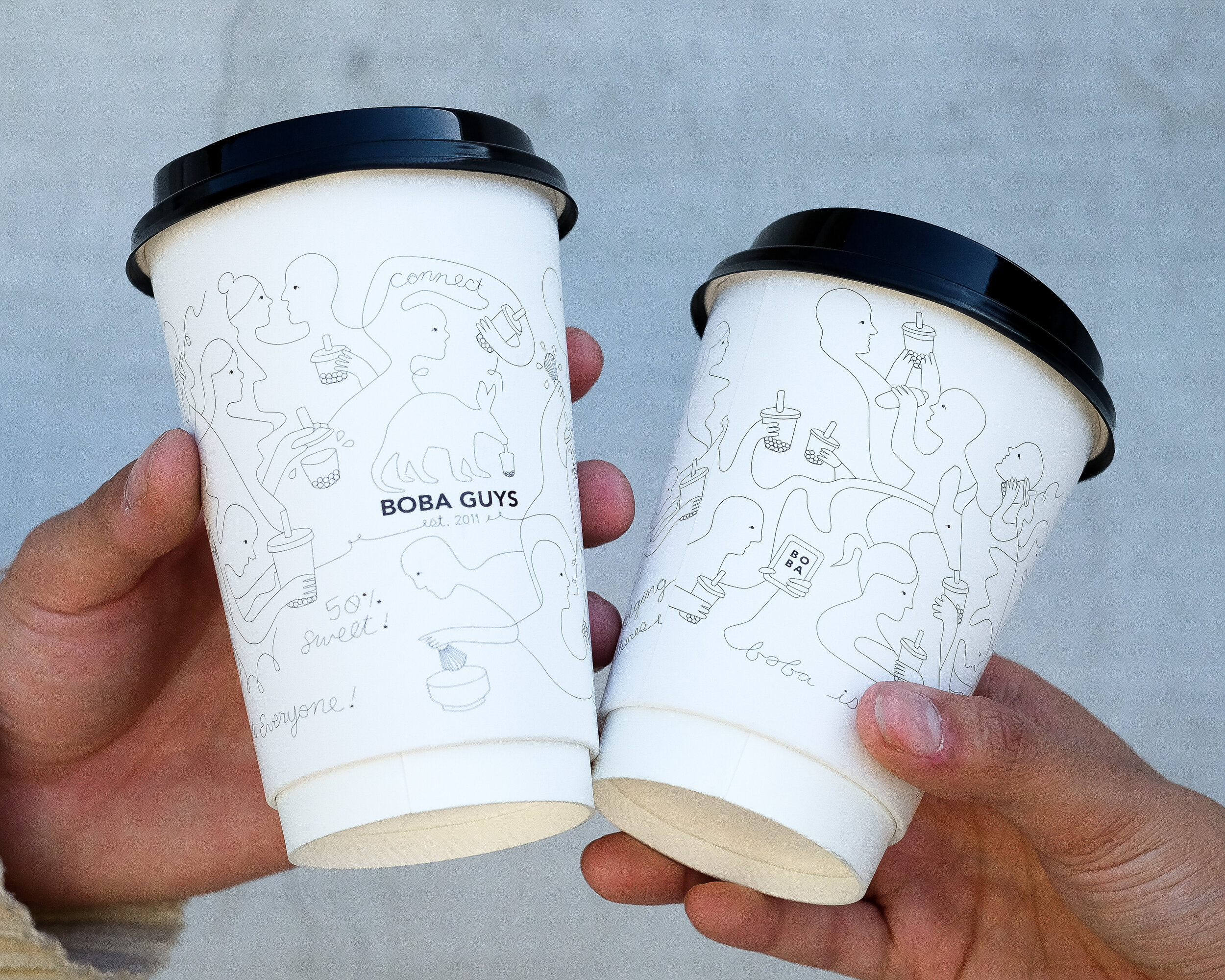Degrees of Connection Cup
Bin Chen
Degrees of Separation or Degrees of Connection?
You’re at a gathering -- you know absolutely no one except the friend that invited you. Suddenly, out of the corner of your eye, you see someone else you know from a completely unrelated context. During that moment, there’s a level of excitement, curiosity, and connection between you and that person, which always leads to the famous response: “No way! You know so-and-so?” These are the degrees of connection that make the world feel so small, and the place where intersection begins.
This idea of “Degrees of Connection” is inspired by the popularized social theory “Six Degrees of Separation” found prevalently in both our personal lives and throughout the history of pop culture. It repeats itself time and time again, even in the way that we tell stories.
Our entire team are students of culture -- we’re nerds who love peeking into the worlds of sociology, business, economics, art history, anthropology, and STEM fields to draw our influence. You can see that even from the early days of treating drink-making like a giant chemistry experiment.
There was a popular show in the ’80’s by Bill Moyer, Joseph Campbell, and LucasFilm called the Power of Myth. Here, they went into depth on how common archetypes have shaped culture, stories, and how we interact with the world. Similarly, we believe different types of drinks and food are archetypal to multiple cultures, sometimes completely unrelated.
When coming up with this concept of what connects us all together, we collaborated with the product team to find drinks that were enjoyed in different pockets around the world. The idea of “same same but different” often connects the dots between different groups of people and ultimately fits into our mission of Bridging Cultures.
If we’re talking archetypal, our Malted Mint Chocolate drink is considered a phenomenon. It uses Milo, a chocolate malt powder that can be found in the Philippines, parts of Africa, the United Kingdom, Australia, Southeast Asia, South America, and Asian American cultures. It’s a staple drink from many of our childhoods. Another one of our seasonal drinks, Ponche, is often compared to mulled wine or spiced apple cider generally enjoyed around the holidays. The concept of a spiced, fruity drink then becomes an archetype that everyone can find a connection to. With such overarching themes, it’s not just a drink -- it’s a larger shared experience or feeling that sparks dialogue and gives us a platform to be open and embrace the culture.
The Iterations
Both our customers and employees found themselves inside last year’s cup illustration. Each of our stores’ teams had their own cup that people “tagged” themselves in. And after seeing how people interacted with last year’s cup, we had certain criteria for this year’s design.
This years cup design:
Must be interactive, through coloring in or mad-lib style.
Must be tangential to our mission of Bridging Cultures
Must have a deeper story to be told through the design
This idea that we’re all connected by some degree can be represented in several different ways. We took inspiration from artists like Picasso, Parra, and even node maps found commonly in data visualization. They highlight different aspects of human connection in their art whether it’s examining how languages intersect or the nonlinear connections of history, art, and culture.
The first solid concept started simply with Googling “how to say connect in different languages”. We found that there were more similarities than differences in phonics and spelling coupled in different regions and cultures around the world.
For this concept design, we asked ourselves -- “How might we visualize how languages are connected to each other?” What eventually came from this was a node-map, often used in data visualization to organize items that vary in degrees of separation.
We iterated a couple of different ways to represent the data nodes. Eventually, we came to the conclusion that we wanted the word “connect” to be inside the lines to help visualize language as a bridge.
ITERATION 1
ITERATION 2
ITERATION 3
The next concept was not based on data or language but art & history. We were heavily inspired by art done in a single stroke because it felt very stream-of-conscious and human. Picasso’s one-liners were a heavy inspiration of this because, often with those pieces of work, he captured the essence of certain objects and subjects. Stylistically, the designs were inspired by some of Piet Parra’s work and the surrealist work of Luigi Serafini.
Finally, we asked ourselves “How might we convey human connection through a single thread?”. The end result was continuous line art of people sharing boba and bridging cultures that wraps around the entire cup .
This line art can further be found throughout our entire Fall Winter ‘19 campaign, especially in our latest flavorbook, our playlists, and our posts on Instagram. Keep an eye out for more of this art throughout the season. We’re incredibly proud of integrating our drink, our mission, and our design into a single thread. We hope you enjoy the art as much as we enjoyed creating it, and we hope you feel like it makes the world just a little more small.




















